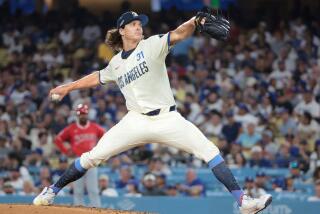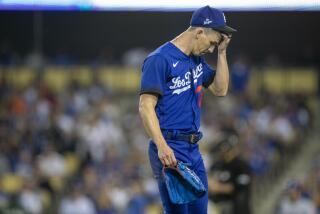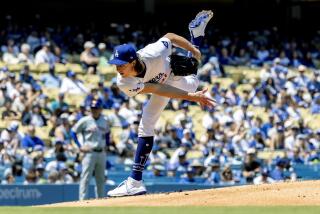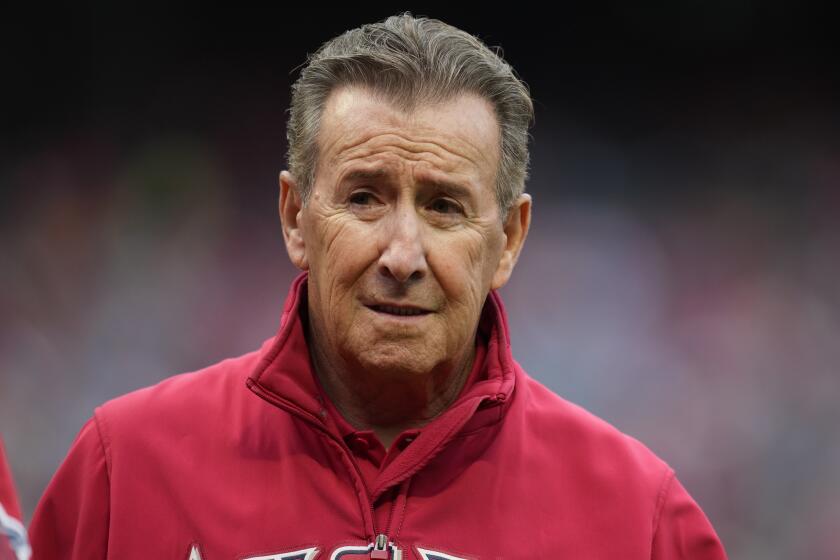Angels count on a healthy Tyler Skaggs to lead the pitching staff
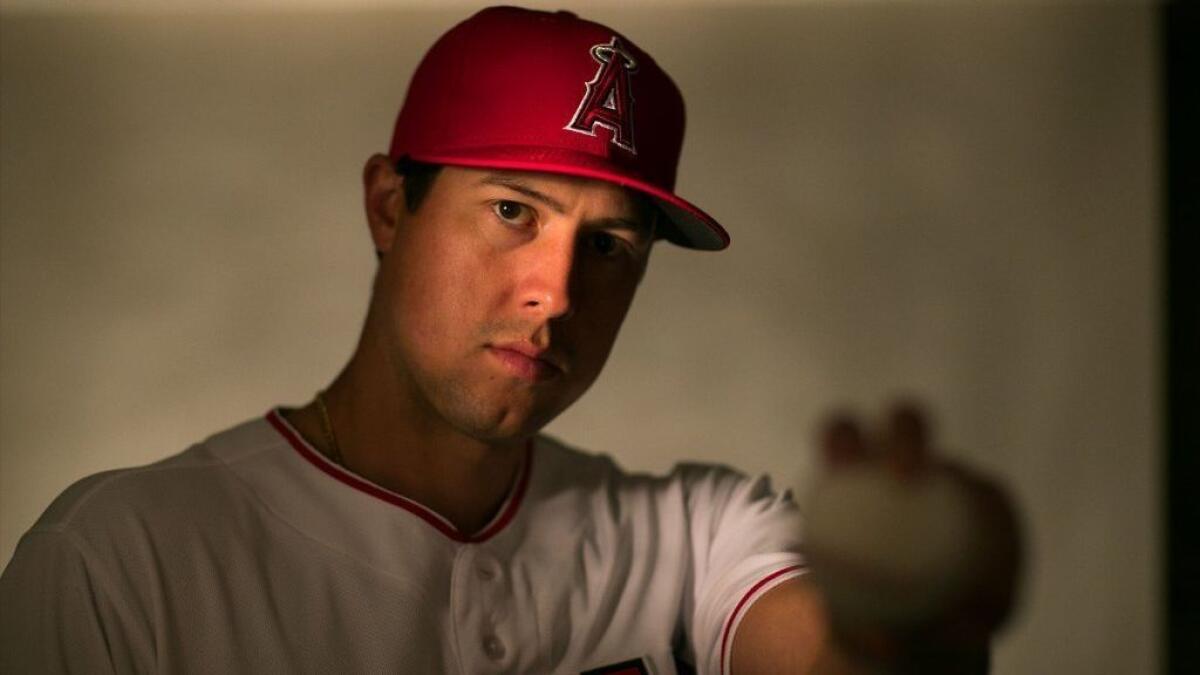
Twice a week, Tyler Skaggs lays his body flush against a yoga mat and reaches for rubber therapy balls. Sometimes he sets them underneath his shoulders to nurture the deltoid that keys his livelihood. Other times, he places them between his thighs, focusing a mobility exercise on tissues that last year betrayed him.
The exercises are uncomplicated. They only require the Angels’ oft-injured starting pitcher to carefully contract and relax his body in time with his breathing.
It’s yoga with toys.
Yet, the exercises are crucial in the middle of an offseason that led Skaggs to a crossroads: The Santa Monica native is expected to anchor the Angels starting rotation for the first time in his major league career. He won’t be able to complete that task if he lands on the disabled list again.
So, for a second consecutive offseason, Skaggs turned to Sarah Howard. She guided Skaggs on how to use Tune Up Fitness Coregeous balls to deep-massage muscles and prevent injury.
“I know what I need to do to function and be at the top of my game,” Skaggs said. “I feel that’s helped me do that.”
The Angels need Skaggs to reach for that ceiling. He’s 27 and embarking on his fifth full major league season, but has never pitched with the regularity expected of a starter.
An injury — be it a tear in his ulnar collateral ligament that led to replacement surgery in late 2014, biceps tendinitis in 2016, an oblique strain in 2017 or separate adductor strains last season — has always interfered. Last season was Skaggs’ first with more than 115 innings since elbow ligament-replacement surgery ruled him out of the Angels’ 2015 campaign, and he still pitched only 125 1/3 innings.
The results are frustrating not only for Skaggs but for general manager Billy Eppler, who has spent his entire tenure in Anaheim solving rotation crises. Angels pitchers and catchers are three weeks away from convening in Tempe, Ariz., for spring training and already the front office adjusted the rotation to account for two-way player Shohei Ohtani’s offseason UCL procedure and JC Ramirez’s continued recovery from elbow surgery.
Eppler patched the holes by signing veterans Trevor Cahill and Matt Harvey to incentive-laden one-year contracts. But the Angels will count on Skaggs and fellow left-hander Andrew Heaney, the only Angels starter to make 30 starts last season, to solidify the rotation.
“I knew coming in after last season that it was gonna be me and Andrew,” Skaggs said. “I kind of already knew that when the season was winding down. I didn’t know if we were gonna sign one of the big-time free agents or not. It would be great if we did. If we didn’t, I know that I’m kind of in a lead role and the better that me and Andrew do, the better the team is gonna do.”
Sign up for our daily sports newsletter »
Enter Howard, the owner of Elite Mobility Training in Los Angeles. Since beginning to work with Howard in December 2017, Skaggs has improved many of the soft-tissue problems that have plagued him throughout his career. Even during the season, he does yoga to improve flexibility and uses therapy balls to target areas where his nerves need relaxing.
“The more consistent he is with his stuff,” Howard said, “the more it’s gonna help him. … He’s very driven.”
Skaggs introduced a wrinkle into his regimen this offseason. He traveled to Cressey Sports Performance in Florida to work with Eric Cressey, a strength coach who specializes in corrective exercise and works with dozens of major leaguers. Corey Kluber of the Cleveland Indians and Max Scherzer of the Washington Nationals are featured in videos or images on Cressey’s website and social media accounts. The accompanying captions espouse the virtues of throwing drills that fine-tune deliveries or squat variations that enhance athleticism.
Skaggs’ individual work is all in pursuit of one goal. He’d like to know what an injury-free season looks like on paper. Before he hurt muscles in his groin last year, Skaggs had a 2.64 earned-run average through his first 16 starts. He gave up only three earned runs in the final 32 innings of the stretch, which ended in June. After the injury, he had a 7.83 ERA in eight starts.
Skaggs believes he can sustain effectiveness over an entire season. So does first-year manager Brad Ausmus, who told Skaggs during their first meeting this offseason that he should be one of the best left-handers in baseball.
It seems only health stands in Skaggs’ way.
“I think the June that I had last year speaks for itself,” Skaggs said.
More to Read
Go beyond the scoreboard
Get the latest on L.A.'s teams in the daily Sports Report newsletter.
You may occasionally receive promotional content from the Los Angeles Times.
